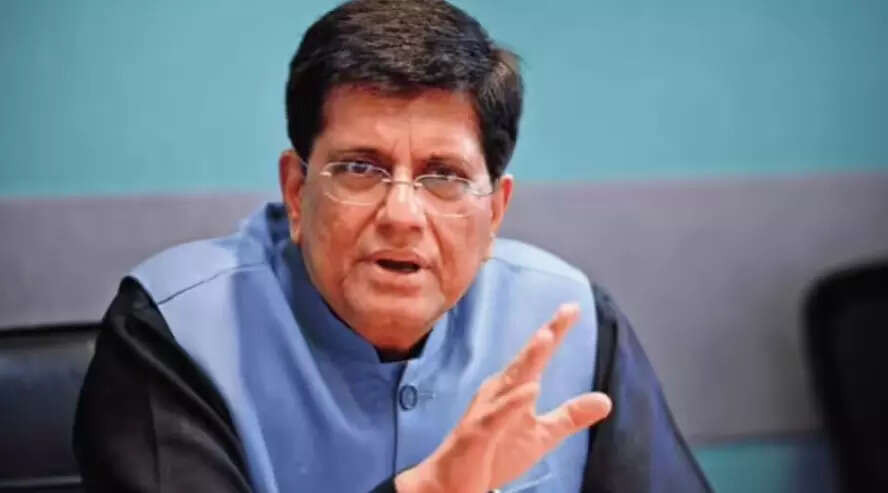India and the US: Cultivating a New Trade Landscape That Benefits Farmers
The aroma of opportunity is in the air as India and the United States work towards forging a trade agreement that promises to safeguard the interests of Indian farmers while opening new avenues for economic growth. The government has been vocal about prioritizing farmer welfare in these negotiations, aiming to strike a balance that enhances trade relations without compromising the livelihoods of those who feed the nation. But what exactly does this mean for the future of Indian agriculture and the Indo-US relationship? Let’s delve into the details.
For generations, agriculture has been the backbone of the Indian economy, supporting millions of families and contributing significantly to the nation’s GDP. Any trade agreement must carefully consider the potential impact on this vital sector. The current discussions revolve around ensuring fair access to markets, addressing non-tariff barriers, and establishing clear mechanisms for resolving trade disputes. These are not just technicalities; they are crucial elements in creating a level playing field where Indian farmers can compete effectively on the global stage.

Prioritizing Farmer Interests in the Trade Deal
The government’s commitment to protecting farmer interests isn’t just lip service. It’s about proactively identifying and addressing the specific challenges faced by the agricultural community. This involves a multifaceted approach, including investing in infrastructure, promoting sustainable farming practices, and providing access to modern technology. It also means advocating for policies that protect Indian farmers from unfair trade practices and ensure they receive fair prices for their produce.
One of the key areas of focus is likely to be on reducing barriers to trade, such as stringent sanitary and phytosanitary (SPS) measures, which can often hinder the export of Indian agricultural products. By streamlining these processes and ensuring they are based on scientific evidence, the trade agreement could significantly boost Indian agricultural exports to the US.
Enhancing Market Access for Indian Agricultural Products
Imagine a scenario where Indian mangoes, known for their exquisite sweetness and flavor, become a regular feature on American supermarket shelves. Or where Indian basmati rice, with its delicate aroma and long grains, finds a wider audience among discerning consumers in the US. This is the potential that a well-crafted trade agreement can unlock. By reducing tariffs and other trade barriers, the agreement can create new opportunities for Indian farmers to export their produce to the US market.
However, it’s not just about exporting more; it’s also about exporting smarter. This means focusing on high-value agricultural products that command premium prices and catering to the evolving preferences of American consumers. It also means investing in branding and marketing to create a strong identity for Indian agricultural products in the US market. You can also read about the impact of previous trade agreements on the Indian economy to get a better understanding.
Addressing Concerns and Ensuring a Level Playing Field
Of course, any trade agreement is bound to raise concerns among various stakeholders. Some may worry about the potential impact on domestic industries, while others may fear that the agreement could lead to increased competition and lower prices. It’s crucial to address these concerns through open dialogue and transparent negotiations. The goal should be to create a trade agreement that benefits both countries and ensures a level playing field for all participants.
This involves establishing clear rules and procedures for resolving trade disputes, preventing unfair trade practices such as dumping and subsidies, and ensuring that all parties adhere to international standards and regulations. It also means providing support and assistance to domestic industries to help them adapt to the changing trade environment.
The Path Forward: A Collaborative Approach
Negotiating a trade agreement is a complex and challenging process that requires a collaborative approach. It involves bringing together government officials, industry representatives, and other stakeholders to identify common goals and address potential challenges. It also requires a willingness to compromise and find solutions that benefit both countries. The current momentum suggests that both India and the US are committed to working together to forge a trade agreement that is mutually beneficial and strengthens their economic partnership. A key aspect of these deals are ensuring the protection of Indian farmers during the process, because their livelihood depends on fair trade.
As the negotiations progress, it’s important to maintain a focus on the long-term benefits of the trade agreement. This is not just about short-term gains; it’s about building a stronger and more sustainable economic relationship between India and the US that can create jobs, promote innovation, and improve the lives of people in both countries.
Conclusion: A Promising Future for Indo-US Agricultural Trade
The potential India-US trade agreement represents a significant opportunity to strengthen economic ties between the two nations while prioritizing the wellbeing of Indian farmers. By focusing on market access, addressing concerns, and adopting a collaborative approach, both countries can pave the way for a future where agricultural trade flourishes, benefiting farmers, consumers, and the overall economy. The path forward requires careful navigation, but the potential rewards are well worth the effort.







